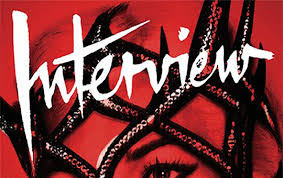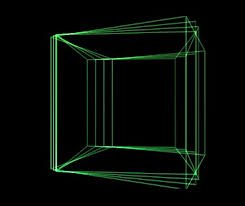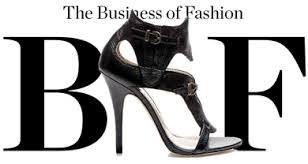 Carlos Acosta (born 2 June 1973) is a Cuban ballet dancer. He has danced with many companies including the English National Ballet, National Ballet of Cuba, Houston Ballet and American Ballet Theatre. He has been a permanent member of The Royal Ballet since 1998, and in 2003 he was promoted to Principal Guest Artist, a rank which reduced his commitment to the Royal Ballet, enabling him to concentrate on a growing schedule of international guest appearances and tours. [...]
Carlos Acosta (born 2 June 1973) is a Cuban ballet dancer. He has danced with many companies including the English National Ballet, National Ballet of Cuba, Houston Ballet and American Ballet Theatre. He has been a permanent member of The Royal Ballet since 1998, and in 2003 he was promoted to Principal Guest Artist, a rank which reduced his commitment to the Royal Ballet, enabling him to concentrate on a growing schedule of international guest appearances and tours. [...] CARLOS ACOSTA - official site
UK TV News interview (vid)
His is a true rags to riches story...
 Showing the World a Clean Pair of Cuban Heels
Showing the World a Clean Pair of Cuban HeelsHis one ambition was to be a footballer. Instead he has become an international ballet star.
The dazzling Carlos Acosta is the Cuban Billy Elliot, a poor kid who triumphed over prejudice and humble origins (his great grandfather was a plantation slave) to be hailed by ballet experts as the new Nureyev. Frankly, you couldn't make it up.
Acosta's home was the shanty suburb of Havana, where food was scarce, wages low and the teeming population queued for their daily food rations.
As Acosta recalls in his extraordinary memoir: 'You lived as part of a community, grateful for the achievements of the Revolution, even though you might secretly listen to the rock music that was synonymous with imperialism.' Amazingly this football fanatic, gang member and break-dance champ won a place at ballet school, forced there by his truckdriver father who saw ballet as a way out of trouble. [...]
At Senior Academy the pressures facing the teenage tearaway were heartbreaking. His mother became bed-ridden, his father was temporarily in jail, a sister was schizophrenic and he was repeatedly humiliated and insulted by teachers who accused him of being dirty and smelling bad.
He was too ashamed to explain that there was no one to wash his clothes, no hot water, that he was sleeping in a cockroach-infested shack. He recalls the teacher who took pity on him and gave him her son's cast-offs: 'For the first time in my life I discovered what it was to wear trousers without holes.' Then came his road-to-Damascus moment. Witnessing a performance by Cuban ballet star Alberto Torrero, Acosta was transported. From that moment he worked furiously. [...]
The crippling physical effort of becoming a ballet dancer, the slog, the agony of injuries, the rivalries and bitchiness are vividly evoked in Acosta's fascinating story. Despite terrible home-sickness, loneliness and low self-esteem, Acosta won every possible student medal and award. Snapped up by various ballet companies, he travelled to Europe.
Imagine his impression of Venice, London and Paris after the deprivations of Cuba. The affluence! The food! The freedom! Tucking into lavish reception banquets, he knew he'd come a long way from the day when his desperate mother roasted his pet rabbit for the family's supper. [...]
Acosta became the first black Romeo to dance at Covent Garden. He shook hands with Princess Diana. In America he was dubbed 'one of the sexiest Latinos in the USA'.
He also celebrated Christmas for the first time and was shocked by the phenomenal quantities of food.
As a party gift he received an expensive leather jacket which, in Cuba, would have taken him 20 years of dancing to buy. He realised that 'more money had been spent on this Christmas party than a Cuban surgeon could hope to earn during his entire lifetime'.
Western affluence and capitalist greed appalled him. He began to despise himself for splashing out on flashy designer get-ups which cost the equivalent of a three bedroom house in Havana. Long-haul travel and short-lived love affairs with tempestuous ballerinas increased his feelings of anxiety and insecurity. The shock of the new way of life, a serious injury, depression and homesickness brought him close to breakdown.
For Acosta there simply was and still is no place like home. Returning to Cuba, where power cuts could last 20 hours a day and soap was in such short supply that he kept bars in his car with which to bribe traffic cops, Acosta slowly rediscovered his passion for ballet. [...]
Reflecting upon the emotions of guilt and alienation that his dazzling career have brought him, he says: 'The real crime was having success and fame and nobody to share it with. I would have given everything up to have my family back.' Perhaps he should have stuck to football? But what a waste of his fluid beauty and breathtaking poetry-in-motion if he had. END
 National Dance Awards: Carlos Acosta feature
National Dance Awards: Carlos Acosta featureMike Dixon with an in depth appreciation and interview with the dancer who won the Best Male dancer award in 2003
HE LOOKS like a magnificent barbarian who has learned perfect manners. The bearing is princely, the demeanour gently courteous, but there is also a heady whiff of something dangerous in the air when he enters. Dressed anonymously in black trousers and roll-neck, Carlos Acosta sits awkwardly in a red armchair in the interview room of the Royal Opera House. As we shake hands he winks, not confidently, but shyly. It is difficult at first to correlate this almost diffident young man with the super-confident stage performer who sometimes exudes the air of a tiger just released from its cage. On stage he looks tall and heavily muscled. Ironically, here in the small room he looks somehow diminished. But that impression of a quietly smouldering fire does not go away. When he starts to speak, although he talks softly, the aura of power seems to grow… [...]
IT IS a poignant irony that Acosta’s greatest triumphs as a dancer have still been unwitnessed by his mother and father. Without his father’s influence the young Carlos might have been lost to the world of ballet, and might even have been killed in the dangerous milieu of street gangs. “At the age of ten I was mixing with people who were stealing, and the chances were that I would become a delinquent. My father thought that I might end up shooting somebody. With his eyes on the future he realised that there would be trouble. We lived in a suburb of Havana where it could be pretty rough. I wasn’t in a gang. We didn’t do drugs. But we didn’t go to school either.” Astonishingly, Carlos’ father decided to enrol him in the National Ballet School.
“My father had always liked ballet but in his youth, as a black man, he could not practise it. He thought it would be good for me as a career. It would have been nice of him to ask me what I wanted to do”…(he pulls a comic face)…“but thank God he made the right decision. My father was always a strong hand. When the school threw me out he went there to speak for me. He could have said that he was tired of running around after me and just given up. He could have taken me out of the ballet and put me in a regular school but he just kept pushing me. I did not like the idea of ballet. At the beginning I didn’t even know what it was! Then there was what my friends would say, because there was prejudice that ballet was not for boys. It was embarrassing. I would always rejoin the school with black eyes after fist- fights with boys who teased me. I became treated like the neighbourhood clown. But I was curious about dancing. I was always very physical and did a lot of sport, especially football. But we are all born to do one thing and you can’t go against destiny.” [...]
 IN 1998 he made his debut with the Royal Ballet in London in Forsythe’s In the Middle, Somewhat Elevated. He seized the opportunity to extend his dramatic range and dance the leading roles in some of Kenneth MacMillan’s ballets: Manon; Gloria; and My Brother, My Sisters. He also showed an unexpected aptitude for comedy as Franz in Coppelia and Colas in Ashton’s La Fille Mal Gardee. The male solos in La Fille Mal Gardee have defeated many talented dancers, as the Ashton choreography requires bravura technique allied to light ballon and fast footwork. Acosta, on the face of it, seemed physically unsuited to this role, being sculpted by nature for the muscular display of Corsaire or Diana and Actaeon. In the event he was a revelation, meticulously observing every tricky detail of the choreography. He has versatility as a stage artist and continues to surprise audiences with his unusual insights in familiar parts. “ I believe ballet technique is only a tool to express something. I am an all-round artist. I bring something special to everything I do. I enjoy literally every show and the enjoyment is contagious for the audience.” [...]
IN 1998 he made his debut with the Royal Ballet in London in Forsythe’s In the Middle, Somewhat Elevated. He seized the opportunity to extend his dramatic range and dance the leading roles in some of Kenneth MacMillan’s ballets: Manon; Gloria; and My Brother, My Sisters. He also showed an unexpected aptitude for comedy as Franz in Coppelia and Colas in Ashton’s La Fille Mal Gardee. The male solos in La Fille Mal Gardee have defeated many talented dancers, as the Ashton choreography requires bravura technique allied to light ballon and fast footwork. Acosta, on the face of it, seemed physically unsuited to this role, being sculpted by nature for the muscular display of Corsaire or Diana and Actaeon. In the event he was a revelation, meticulously observing every tricky detail of the choreography. He has versatility as a stage artist and continues to surprise audiences with his unusual insights in familiar parts. “ I believe ballet technique is only a tool to express something. I am an all-round artist. I bring something special to everything I do. I enjoy literally every show and the enjoyment is contagious for the audience.” [...]ON impulse, I tell Acosta that of all the performers I have seen, the one whom he resembles most is Rudolf Nureyev; sharing the same pantherine quality and the ability to ignite an audience. Suddenly, the proud eyes flash, he uncoils upwards in his chair and makes an overwhelmingly imperious gesture with his arms. “I know how to command the stage!” he declares. It is an electric moment, as Acosta transmutes within a nanosecond from modest-mannered dancer into a star. For a moment the Royal Ballet’s interview room is flooded with grandeur. It is the defining moment in our conversation, the sudden epiphany that offers the key to Acosta’s personality. The transition from dutiful son to grandee of the ballet, within the twinkling of an eye, is revelatory. One senses that the original uncomplicated Cuban boy is still unviolated by experience, that in essence Acosta is unchanged by the bruising demands of fame. He has developed the exile’s thick carapace of caution to protect himself. His sensors are finely attuned to detect criticism or lack of respect and to deflect those people who are only attracted by his fame. But as he talks about his family one is drawn to the inescapable conclusion that this tiger is a predator only by necessity. He is a warm, friendly individual who has learned to survive in a competitive jungle with values alien to his own. Not merely to survive, but to triumph. END
 From Break Dancing to Ballet
From Break Dancing to BalletTHE day Carlos Acosta learned he was to study ballet, he climbed to the roof of his apartment, took a pigeon in his hands, stroked its feathers and sobbed. Today, Acosta is a star with the Royal Ballet whose name is not infrequently uttered in the same breath as Nureyev’s and Baryshnikov’s. That moment atop the pigeon roost, as he recounts in his memoir, “No Way Home,” marked his first step from indigence in Cuba to a life of fame and glamour. But here was the rub: The 9-year-old wanted to be Pelé, not a prince. And although this is a Cinderella story — ragamuffin running wild in the streets metamorphoses into ballet god — it is one in which the hero spends a dizzying amount of time pining for his position amid the squalor of the hearth. [...]
 No Way Home: A Dancer's Journey from the Streets of Havana to the Stages of the World
No Way Home: A Dancer's Journey from the Streets of Havana to the Stages of the World[REVIEW]
I'M NOT interested in dancing or Cuba. To speak plainly, I didn't expect to enjoy this book. But enjoy it I did.
From the cover, the book appears to be about the life of a fabulously talented dancer who begins his life in dank poverty in Cuba, and fight his way out of all that. Sounds like a well worn idea, right?
But it's far more interesting than that. Carlos Acosta actually didn't want to be a ballet dancer, and tried to stop being a dancer several times. He almost succeeded.
The book isn't really about dancing. You don't need to know anything about dancing to appreciate the soul of this man. Acosta could have had the same life and travels and written the same basic book even had he been a swimming star, a soccer star, film star, baseball star, a great break dancer or singer. The core question of the book would still have been the same: What use is ambition and earthly success if you lose your family and your sense of belonging in the world? Does having talent give you a responsibility to fulfill your potential?
Acosta comes off as a very likeable guy, even as he describes himself doing rather unlikeable things, at times. He is poor but does not hate poverty. He has troubles in his family but still feels that he belongs with them. He has troubles with his country but wants to stay. He acknowledges that he's in the minority-- that lots of his countrymen want to escape. He paints no rosy picture of life in Cuba. He sees the problems, he just doesn't mind them.
His family, teachers, and friends relentlessly push him to fulfill a destiny that they insist is his. At times he also becomes ambitious to dance well, but his thoughts always return to his family and the beloved dirty, terrible, dangerous neighborhood of his childhood. He travels far, but always finds a way to go back home. Perhaps the title should have been No Way to Stay Home.
I like Acosta because he doesn't buy into the philosophy of ambition for ambition's sake. Yet to please the people he loves he must leave the people he loves and appear to love something else. How he comes to terms with this makes for a book I felt compelled to read in one sitting. END
Carlos Acosta: From Backstreets to Ballet
NOT just a virtuoso performer, it is Acosta's ability to connect with his audience that has made him an international star. Conversely, Acosta says his audience is what inspires him.
"When I find people that express how much my art makes them feel, this is priceless," he told CNN. "You can't buy that with money, you can achieve that only with art -- you really touch people. Once you do that it lives on forever."
The World of Carlos Acosta
Never throw away: Photographs of my family are special to me – particularly one of us at Santa Maria beach in Havana; and some photographs remind me of performances I have been in. Living in so many places, I have a habit of not hanging on to many objects. I have been here 10 years, but Cuba is my home. Now I have a house there, half an hour away from my family, bought as a ruin three years ago, and I go there five times a year. I might start having more things there.
Portrait of the Artist: Carlos Acosta, Ballet Dancer
If someone saw one of your performances in 1,000 years, what would it tell them about 2007?
THAT, against most people's prejudice, contemporary ballet does not emasculate male dancers. I represent power and masculinity in dance.
 TOCORORO - A CUBAN TALE
TOCORORO - A CUBAN TALE[Ballet.co.uk - Jul. 2003]
IT IS so fashionable to be a victim today. Whether tripping over a curb or your human rights, suffering is cool.
Cuban ballet star, Carlos Acosta, has never hidden his homesickness or the loneliness he lives with at the top of his profession as one of the world s most popular dancers. Now Acosta, 30, directs, choreographs and stars in a show about the price of fame.
Tocororo is a little boy (played by Carlos's 13-year-old nephew, Yonah) who leaves the poverty stricken barrios of his childhood, as did Acosta, but on maturity discovers his God given talent is a barrier. The real life Acosta, against all the odds, has become a one-man world heritage site thanks to his sublime gift of dancing; in his show his character must deconstruct his classicism to join the street cred crowd. Hmm. At one level a doubtful premise that chimes in with the anti-art lobby always on the look out for a good bit of dumbing down; at another, letting our hair down does us all a power of good.
Whatever he does Acosta's stage presence is warm, magnetic and utterly likeable and when Tocororo finally learns to relax and mambo with the irresistible on stage band, he conquers the world. Salvatore Forino's sets are sparse but instantly conjure up night club, shanty town and street corner. The central set piece in which Acosta goes earnestly Messianic and teaches his people that showing off on the drums is better than pasting each other, is mercifully short, but the dancing is endless. Mind you there is only so much you can say with a shimmy and a pelvic thrust, delightful though that may be, but boy, what dancers Acosta has recruited from the Danza Contemporanea de Cuba.
The love interest, Clarita, who turns the innocent boy into a man in the time honoured way, is Veronica Corveas, while Alexander Varona as the Moor is spectacular in that old fashioned eccentric Straw Man dancing sort of way.
As a choreographer, Acosta makes the mistake of using balletic principles of untold yearnings and mysterious forebodings to evoke atmosphere without story. You cannot be that poetic in a show, you just confuse the action - and the audience. But for spreading his wings and searching for a life after ballet, Acosta deserves all praise. And the fact that we would be happy to watch him dance the Railtrack time table helps him no end. -Jeffery Taylor [Former dancer, Critic and an Arts feature writer for the Sunday Express]

 Khachaturian: Spartacus (Bolshoi Ballet) [Blu-ray]
Khachaturian: Spartacus (Bolshoi Ballet) [Blu-ray]FOLLOWING sensational performances in Moscow and London in 2007, the Bolshoi's production was re-staged and filmed in January 2008 in the Paris Opera's Palais Garnier, especially for Carlos Acosta. Carlos Acosta is one of the greatest male dancers of our time and has danced with all the major ballet companies of the world including the American Ballet Theatre, Royal Ballet, Houston Ballet and Bolshoi Ballet.
Acosta is Spartacus at the Bolshoi
IT IS one of the blockbuster ballets in the Bolshoi's repertoire. Tonight (6 August), Cuban superstar Carlos Acosta becomes the first Westerner to dance it on a British stage.
Spartacus is a sand-and-sandals epic which pits heroic gladiators against decadent patricians in a slave uprising in ancient Rome.
The story told in the ballet, with music by Soviet composer Aram Khachaturian, appealed to the Moscow regime for political reasons when it was first produced in 1956. Hollywood followed suit four years later in the movie starring Kirk Douglas and Laurence Olivier.
Even in post-Soviet times the ballet remains a Bolshoi staple. Expectations for the London shows are running high after standing ovations in Moscow when Acosta premiered last month.
All three of this week's performances at the London Coliseum are sold out.
Alexei Ratmansky, the Boshoi's artistic director, said it was an epic role that Acosta, 34, was destined to play: "The part looks as if it was created for him.
"It's very much his personality. He's very much like a superhero who could lead a group of people to anything - to freedom, to ideals. It seems to me that Carlos doesn't need to act it, it's just him."
The role is technically very demanding. Mr Ratmansky added: "Spartacus is one of the most difficult parts in the male repertory." [...]
 A Hit at the First Manchester Festival, Returns
A Hit at the First Manchester Festival, ReturnsSALFORD, England — One of the highlights of the inaugural Manchester International Festival in 2007, it is said, was a program featuring the artistry of the Cuban superstar ballet dancer Carlos Acosta. Not surprisingly, he is back for the second festival, a boldly inventive celebration of the arts including 20 commissioned works over 18 days in and around Manchester.
On Thursday evening Mr. Acosta — with four other dancers and the BBC Philharmonic, conducted by André de Ridder — presented five ballets exploring the nature of the male muse in ballet here at the Lowry, a gleaming, chrome-plated theater complex that opened in 2000, and performed in three of them.
As a fan of ballet but not a critic, I am pretty easy to please. Almost everything dancers do amazes me. And the kinetic and charismatic Mr. Acosta, now a guest principal with the Royal Ballet in London, was predictably amazing. He danced in “Afternoon of a Faun,” a Jerome Robbins ballet to Debussy’s breakthrough orchestral work, “Prélude à l’Après-Midi d’un Faune,” of 1894; “Suite of Dances,” another Robbins work, to four pieces from the solo cello suites of Bach; and “Apollo,” a George Balanchine classic, to one of Stravinsky’s most subtly intricate and astonishing ballet scores.
At the ballet I am always fascinated by what choreographers and dancers can reveal about the music, especially if it is music I know well. In “Suite of Dances,” for example, as executed with a deft mix of playful athleticism and graceful fluidity by Mr. Acosta, Robbins draws out the jaunty energy and impish rhythmic gait of the Baroque dances that Bach evokes in the cello suites. Mr. Acosta conveyed the pirouettes and spinning Rococo flourishes in the music through loose-limbed, saucy turns and leaps. Responding to the choreography and to Mr. Acosta’s flirtatious gestures, the excellent cellist Natalie Clein found a bit of the Swingle Singers in these formidable solo works. [...]
 The orchestra was at its best in “Afternoon of a Faun.” Robbins, in updating the original scenario about a narcissistic faun, had to look no further for a modern-day equivalent than a ballet studio. Mr. Acosta portrayed a dancer, working alone, examining himself and his every move in a mirror, here the invisible fourth wall of the stage. A female dancer (Ms. Cao) arrived. Or did she? Might she have been a product of the man’s imagination?
The orchestra was at its best in “Afternoon of a Faun.” Robbins, in updating the original scenario about a narcissistic faun, had to look no further for a modern-day equivalent than a ballet studio. Mr. Acosta portrayed a dancer, working alone, examining himself and his every move in a mirror, here the invisible fourth wall of the stage. A female dancer (Ms. Cao) arrived. Or did she? Might she have been a product of the man’s imagination?It was eerie to watch Mr. Acosta and Ms. Cao in a dance of cautious seduction, mostly staring into the audience (at the mirror) rather than at each other. The piece captures the ambiguity of attraction. Are these dancers intrigued by each other or by the idea of seeing themselves as desirable?
In any event, I heard Debussy’s astonishing 10-minute piece as if for the first time, for which I thank Robbins, Mr. de Ridder and — especially, on this night — Mr. Acosta. END
 Rushes: Glorious Projections of Passion and Pain
Rushes: Glorious Projections of Passion and Pain[EXCERPT]
THERE is a chorus of couples in grey, who appear like a Constructivist frieze of happiness, against which the tormented central drama is played.
That centres on Carlos Acosta, who obsessively pursues a red-frocked Laura Morera through the mesh, as a neglected Alina Cojocaru looks plaintively on. The pas de deux for this central trio are extraordinary: twisting, contracting, slithering adventures of emotion and pain.
As Acosta's passion slips into violence, Morera flings herself into his arms as if trying to fly through his flesh. She disentangles herself from him, pushing him gently away, butting him with her head. A hand is repeatedly raised in warning.
At the close, the screens rise, and under a sharp, yellowish light, Cojocaru finally gets her man in a duet whose complex couplings suggest both despair and a tiny glimmer of hope. It is raw, beautiful, and danced with the kind of commitment that suggests it will only grow in performance. [...]
 Cuba Libre!
Cuba Libre!He's Cuba's second most famous son, but when principal dancer Carlos Acosta brought the Royal Ballet home, there was a shock in store for Havana's classical dance lovers
[EXCERPT]
MORE than anyone else on the Royal Ballet's tour of Cuba, Tamara Rojo knows what bringing this company home means to Acosta: "He has improved Cuba's reputation so he deserves the love Cubans have for him. I am so happy for him."
The week-long tour is a massive undertaking, with a 150-strong crew of ballet teachers, stage crews, costumers and wiggers, conductors, pianists, physiotherapists and, of course, dancers, 80 of them. Battling heat, antiquated theatres and even an outbreak of swine flu, the company is performing several excerpts, a couple of short ballets, and a full three-act staging of Kenneth MacMillan's 1974 classic Manon, the vast majority deliberately taken from its modern repertoire. [...]
THE night before, Acosta and Rojo's performance of Le Corsaire had been projected on to an outdoor screen so that Habaneros could watch for free. Thousands turned up, packing on to the steps of the Capitolio, and I was amazed to see urchins sitting transfixed at my feet. I tell Acosta this, and he grows ever more animated: "Can you imagine? People are concentrating. And it's ballet... ballet! It's not a world cup, it's ballet."
He sees this tour as one of the highlights of his life. "One of my biggest accomplishments. You cannot dream of having the Royal Ballet in Havana." Lack of resources and the suspicion of those in authority could have killed the dream, but it did happen, and the story of how is, in the words of one of those involved, astonishing: "Nothing ever happens in this country - but this did."
There is a belief in Cuba that high art can exist at the heart of any nation's life. It's a belief that we in Britain seem to have lost and yet which, by asking the Royal Ballet to visit, Cuba appears to be attempting to regain. "Dance is the true religion," Acosta says. "You put your health at risk, and the money's no good." [...]
MUCH of it comes down to Acosta who, while his colleagues defected, held faith with his country and never criticised Castro. Partly this is because of his determination to remain close to his family. "Carlos is the boy born in Los Pinos, a poor slum on the outskirts of Havana," says (novelist) Miguel Barnet. "And however much he travels, he remains there; the boy who stole mangoes from the trees." [...]
 IT'S evening, and the city has failed to cool. Beautifully dressed Cubans fill the road outside the Karl Marx theatre. Cuba's high society, those who live "life in the pink", are here. Amid the 5,500 audience, I spot Leonardo Padura Fuentes, Cuba's equivalent of Ian Rankin, and Fernando Alonso, the man who accompanied Alicia Alonso around the country all those years ago. And there is Alex Castro, Fidel's son, with his charming wife. Yes, it's La Vie en Rosada. But there are many more who have queued for days and paid $1 a ticket.
IT'S evening, and the city has failed to cool. Beautifully dressed Cubans fill the road outside the Karl Marx theatre. Cuba's high society, those who live "life in the pink", are here. Amid the 5,500 audience, I spot Leonardo Padura Fuentes, Cuba's equivalent of Ian Rankin, and Fernando Alonso, the man who accompanied Alicia Alonso around the country all those years ago. And there is Alex Castro, Fidel's son, with his charming wife. Yes, it's La Vie en Rosada. But there are many more who have queued for days and paid $1 a ticket.Behind the scenes, Tamara Rojo and Carlos Acosta are preparing for one of the most extraordinary performances of their careers. There are yells when they first appear on stage, and at the end, when Rojo falls and Acosta follows, the crowd leaps up, many in tears, clapping until their hands ache. It turns out that Cubans adore Kenneth MacMillan's choreography. [...]
"SOMETIMES as a dancer you feel victimised," Rojo tells me. "While it's a privilege to dance, in our society irrelevant things are well rewarded. In Europe we produce cheap television that is unchallenging. It has become a way for uninspiring people to turn into celebrities of nothing. Dancing is not so well rewarded. You give 20 years of your life, but you will walk away with nothing. Just memories." She pauses and smiles. "Which are beautiful." [...]
SITTING above Havana, gazing over a city slowly being rebuilt, (dancer) Edward Watson suggests that back in Britain the link between dance and reality has become tragically worn, that in our wealth we've lost the understanding of what a tour like this should mean. "Here, people come to be entertained," he tells me. "In London, too many come to criticise, to form their opinions, but here they just come for a good time." END

_____________________________________________
RELATED
 Ballet: The Secret Lives of Dancers
Ballet: The Secret Lives of DancersThey were once the toast of society. But modern-day corps de ballet endure punishing working hours, crippling injuries, terrible pay and little job security. Then why do it? Richard Johnson spent a day with the Royal Ballet’s finest to find out .
[EXCERPT]
SINCE the death of Rudolf Nureyev, there have been no 'superstars' in ballet. He was about so much more than the dance, which is why he went on to become one of the most photographed men of the 20th century. Born to an impoverished family in Russia, he ultimately died on his private island purchased with the millions he made during his dance career. That was in 1993, but he remains an inspiration to this day. [...]
SOME are studying choreographers' notations. The notations are a ballet's steps, written down on a musical stave – a balletic score, in effect. Each line of the notations represents a different part of the body, and abstract symbols show how each part moves during the dance. As any dancer will tell you, in their darker moments, the choreographer is the real star of ballet – the dancers are just the ones who dictate how brightly that star shines. [...]
THE dancers are very huggy and kissy. And in such an intimate job, it's inevitable that relationships happen. Most, though, look elsewhere – even if it's not very far. Mara Galeazzi married a Royal Ballet stage technician. 'He always says to me, "You have so many beautiful men around you all day, with perfect, toned bodies. Why do you choose me?" He is very big, and strong, but I say to him, "That's the beauty of it – I see so much perfection every day.'" [...]
FINDING out the limits of what is possible can be painful. The ideal ballerina has toes that point outwards. The 'turnout' is the cornerstone of classical ballet. It begins at the hip and moves down to the knee, the tibia, the ankle and the foot. But if the leg isn't turned out naturally, it can be done by stretching, which can take its toll. From the number of straps and supports, it's clear that every dancer nurses some sort of injury. [...]
 THE dancers spend the class studying every aspect and angle of themselves in the mirrors. 'It's a visual art,' Pennefather says, 'so we're always aware of how we look. It's not vanity. Although there are some people who are vain. Who build up, not for strength, but for appearance. I've never done that. You should only do what's necessary. But you do want to look right in the part.'
THE dancers spend the class studying every aspect and angle of themselves in the mirrors. 'It's a visual art,' Pennefather says, 'so we're always aware of how we look. It's not vanity. Although there are some people who are vain. Who build up, not for strength, but for appearance. I've never done that. You should only do what's necessary. But you do want to look right in the part.'The dancer Gelsey Kirkland actually felt compelled to go one stage further and had plastic surgery to improve her onstage 'line'. She had her earlobes trimmed and her nose reduced, and silicone implants in her lips and breasts. In her tell-all autobiography, Dancing on My Grave, Kirkland details her struggles with cocaine, eating disorders, and a choreographer who made her pop amphetamines while issuing dictates like 'must see the bones'. The dancer Heidi Guenther – who died in 1997 as a direct result of an eating disorder – was an exceptional case, yet to talk to young dancers working today, anorexia and bulimia are as much of a problem as they ever were. [...]
THESE days, there is certainly more science. The dancers do Gyrotonic, an exercise system that uses specially designed wooden machines with rotational discs and weighted pulleys to strengthen their muscles with flowing, circular movements. Gyrotonic looks like pilates but is more like yoga in its origin and breathing techniques. And their bodies are monitored throughout, by computer.
'Sports scientists are getting interested in how we train,' says Cuthbertson, 'and how we fire certain muscles. In the olden days, if someone was injured they would just go away and, when they felt better, come back. Now, because of the science, we know what we're going to achieve by rehabbing properly after an injury. But when we're on stage, we don't care if we're firing some muscle or not. We just want to move people.'
Which is where the acting comes in. When everything else is about technique, it's easy to forget about the acting. 'You spend years and years at school,' Cuthbertson says, 'trying to make your best frappe, or your développé to the left a bit higher, or your arabesque a bit more extensive. Suddenly you join the company and the first thing is you're acting. You're not being this ballerina you trained for. You are pretending to be a peasant, a whore or a gipsy.' [...]
SOME principals at the Royal Ballet negotiate salaries for themselves – some appoint an agent. 'When I started out,' Pennefather says, 'I was on £1,100 a month. Now they start on something like £1,500 a month.' As dancers move from first artist to soloist to first soloist to principal, they get a rise. But the biggest rise is from principal to highly paid media darling.
Nureyev was the wealthiest man in ballet, with an estate, estimated in Vanity Fair, at $80 million. Other estimates were noticeably less, at between $15 million and $25 million. But there are reports as late as 1977, the heyday of the 'dance boom', when the Kirov émigrés were making up to $10,000 a performance, that Nureyev still demanded cash payments on occasion and still got them. Sylvie Guillem made thousands for every show she did in Japan. But there's only one Sylvie Guillem.
And, these days, it seems society only has room for one Sylvie Guillem. During the golden age, of course, the great ballerinas were the toast of all society. 'I do sometimes wish I was in on the Ballet Russes,' Cuthbertson says. 'On that train with Diaghilev. When ballet was fashionable and pioneering and something that people looked up to. Nowadays, to a lot of people, it's something that belongs in a museum.' END
WAYNE McGREGOR
 Royal Ballet, Royal Opera House, London
Royal Ballet, Royal Opera House, LondonMonica Mason's choice of Wayne McGregor as the Royal's house choreographer bears its first fruit
SOMETIMES the unlikeliest people come up with the wildest ideas. Dame Monica Mason's appointment of Wayne McGregor – a cybergeek who grew up without going near a ballet class – to a post once filled by Frederick Ashton and Kenneth MacMillan might have seemed counterintuitive. But Mason knew success when she saw it. And Chroma, McGregor's last work for the Royal Ballet two years ago, was the most dangerously thrilling thing to have happened on the Opera House stage in years.
So McGregor's first main-stage work as house choreographer has had plenty to prove – and not just that he is capable of producing another hit. It matters almost more that the company's dancers are fired up by association. The opening moments of Infra make it dazzlingly clear that they are. [...]
INFRA (Part 1) / (Part 2) / (Part 3)
This choreography is incredible and it is beautifully performed. The moving images at the top only take away from it in my opinion. Why are they there?
I think it's because the piece is all about 'beneath the surface' (what's going on inside people and between them) the images at the top literally show being beneath the surface.
Okay that makes a lot of sense. Wow, what a brilliant choreographer!
The Making of INFRA (Part 1) / (Part 2) / (Part 3)























